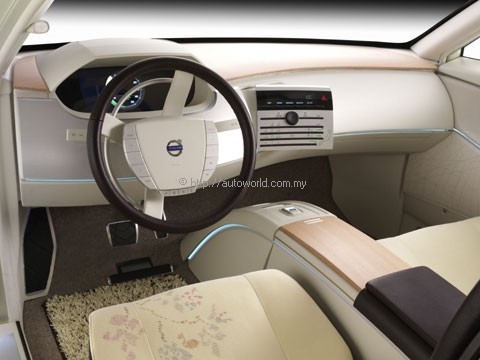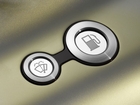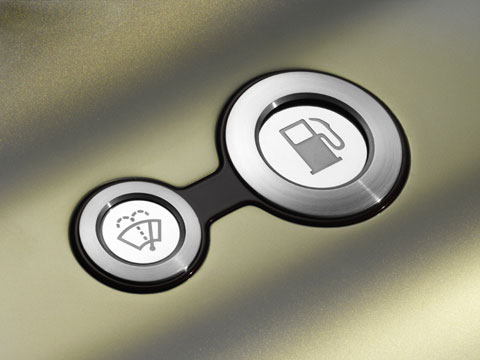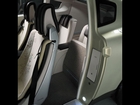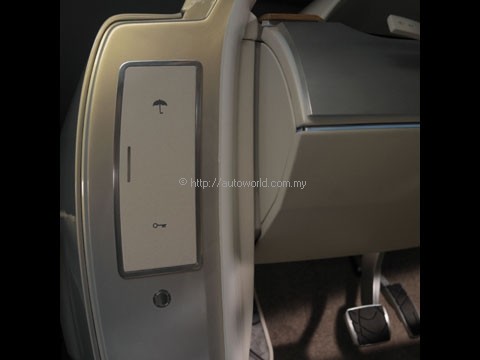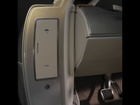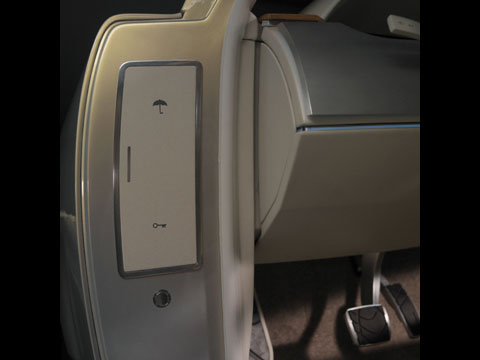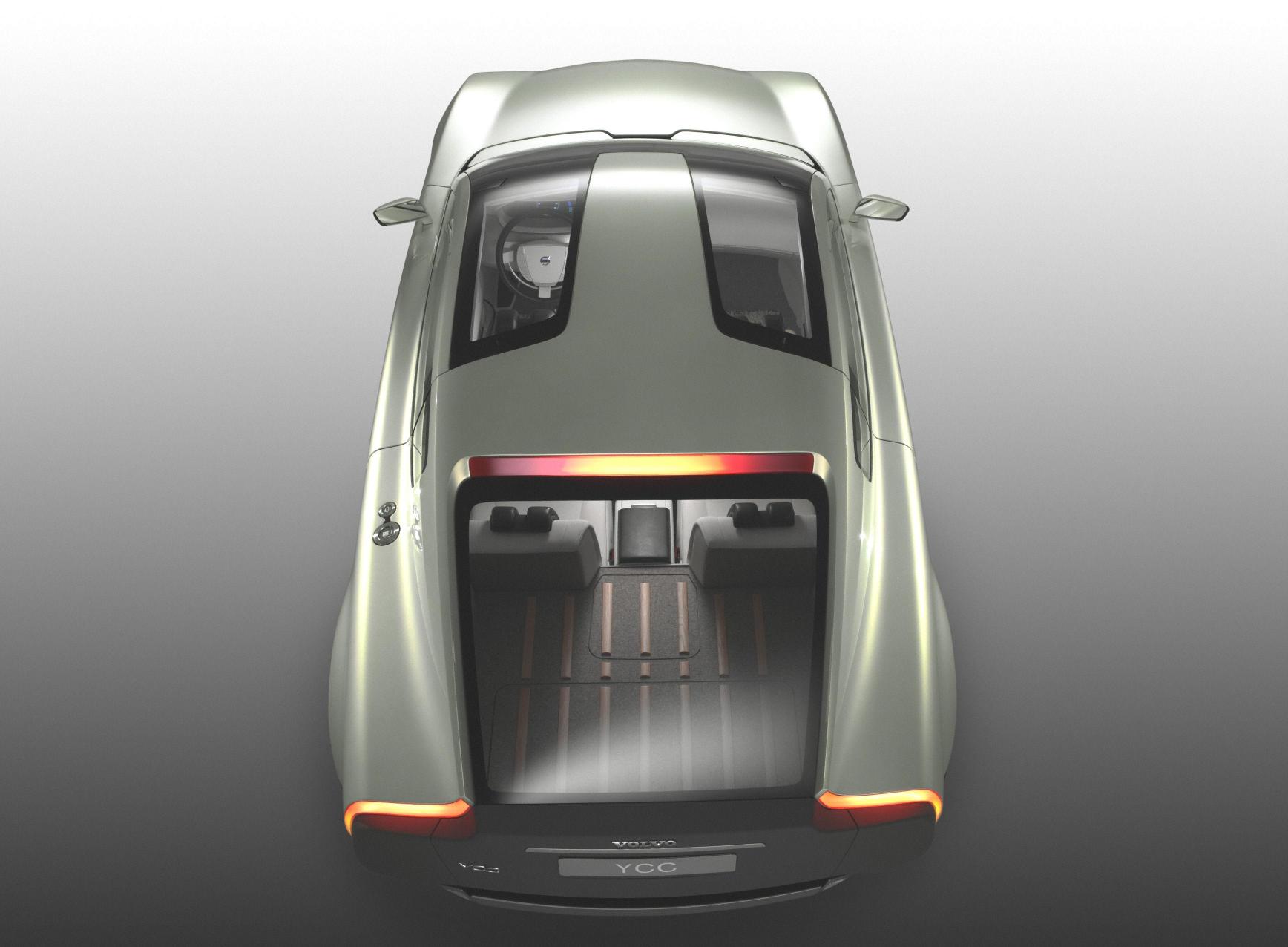Volvo YCC: By Women, For Women
Traditionally, the car has been considered a ‘male thing’, probably because it’s very much a machine and the people who designed and built cars in the early days were men anyway – while the women stayed home and cooked and looked after the kids.
Yet, today, the car is used by women too and they do form a significant proportion of motorists on the roads, so it stands to reason that car designs should also taken into consideration their needs. The problem has been that much of the time, the designers have used a male perspective and there are some areas which may not be given attention where women motorists are concerned.
It is with this situation in mind that a group of women at Volvo’s global headquarters in Sweden attended a seminar two years ago that focused on how to better cater to women customers. During the event, the women began questioning two facts: Women purchase about 65% of cars (in America) and influence about 80% of all car sales; yet, for a century, men have made most of the decisions in the design, development and production of a car. Their conclusion: If women – whether they are single professionals, housewives or grandmothers – do the bulk of car-buying and driving, they should have a voice in car design.
This led to a proposal for an all-female team to develop a concept car all the way through and it was enthusiastically supported by Volvo’s top management, and even by the president himself. From the outset, the aim was to develop the concept car very quickly and at less cost than the typical concept car – and they have done it with the YCC, which stands for ‘Your Concept Car’. More than 120 Volvo employees participated in the design, development and production of YCC. All final decisions were made by women.
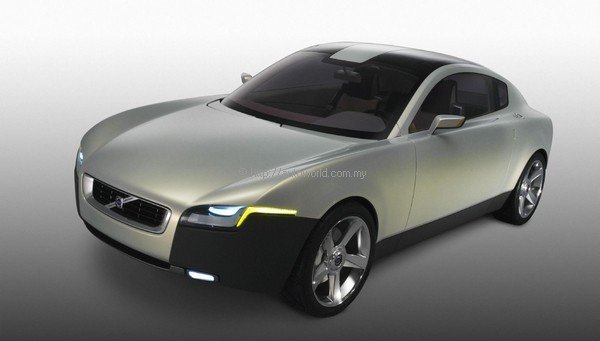 |
The YCC is a car of many contrasts. It is functional and user-friendly, yet sporty and emotional. Its exterior styling strikes a balance between all these qualities.
An excellent view from the driver’s seat was high on YCC wish-lists. In many cars, it can be difficult to see to all four corners. This can make a car hard to park or to get through tight spots. But, in the YCC, it is easy to see where the car starts and where it ends, because the front end is low, the fenders have been brought into sight and the traditional Volvo V on the bonnet section has been inverted. The effect is reminiscent of the Volvo P1800, giving the car a sporty look and the driver full command of the situation ahead. The equivalent has been achieved at the rear end, where the rear window extends almost all the way to where the car ends.
The YCC is as big as the Volvo S60. Its variable ride height function enables it to be raised or lowered either when driving or when parked. It is a car which combines sportiness and robustness and the exterior design strives for a balance between these characteristics. Its skidplates emphasize the functionality.
The bumpers and lower side sections are made of a tough, durable material, for an enhanced functional feel. This effect is balanced by the streamlined beauty of the body panels. They have been finished in Chameleon, a ‘flip’ (colour-change) paint for an iridescent, silky look. Depending on the light, the exterior flip colour Chameleon changes from green to gold or blue to yellow.
The lighting elements are important aspects of the YCC’s styling. The headlights are lenses of transparent thermoplastic which project the light from banks of LEDs. The effect is that of light emanating from a block of ice; no bulbs or LEDs visible, just light. The rear light clusters enhance the characteristic look of this Volvo. Here the red section flows seamlessly into the yellow. The high-level brake light is at the top edge of the rear window. If the driver brakes hard, the red area grows bigger. If the driver has to brake extra hard, the brake light pulsates.
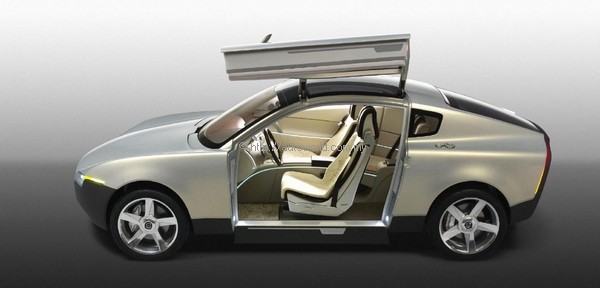 |
The YCC was designed with wide side door openings for better display of the car interior, easier back seat loading and unloading, and to make it an easier car to get in and out of. When closed, the gull-wing door extends only as far as the bottom of the painted body sections, which means that it extends only 60 cm out from the car when opened (that’s less space than many conventional car doors need to open fully). As the gull-wing door opens upwards, the sill section below it opens out and down. The advantages are that there is no high sill to climb over and that the surface presented is always a clean one.
The drop-down sill also has a dual function (besides allowing a smaller wing span for the gull-wing door): it makes for easier entry and exit and it also presents a clean interior surface. No risk of brushing against grimy car exterior surfaces and soiling your clothes.
Another advantage of the door solution is that the B-pillar has been moved further back, further enhancing the driver’s view of the road.
The YCC was designed to suit the individual. You choose the information and settings you want, decide how you like the interior to look and how high you like to ride. When you get into the car, the side support in the seat will have been lowered for you. The whole seat will also be in its lowest and furthest- back position and both steering wheel and car body will be raised. All these settings add up to maximum freedom of movement before you close the door. Then the side supports in the seat will return to their comfortable, cocooning driving position.
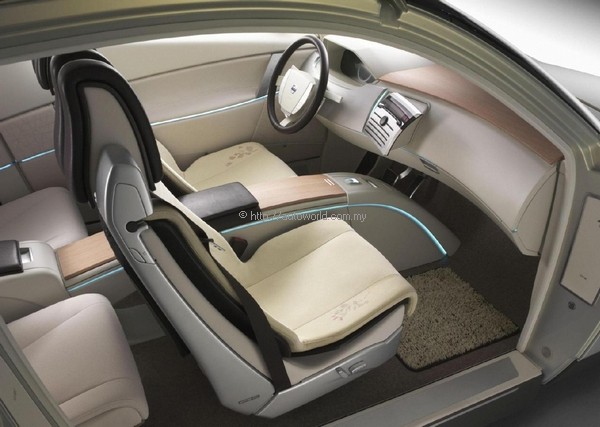 |
A key ambition in developing the YCC was to ensure that the driver, regardless of height, would be able to sit correctly when driving and have the right line of vision too. The result was Ergovision (patent pending) – ergonomics and optimum line of vision in one system.
When buying the car, your whole body will be scanned at the dealership, then this data is used to define a driving position – just for you. This is stored in digital form on your key unit. Once you get into the driver’s seat and dock your key on the centre console, the seat, steering wheel, pedals, head restraint and seat belt will all be adjusted automatically to suit your personal build. The result is a sound driving position with the best line of vision for you.
If you want to alter the stored position, you can change the settings of the various car components in the system, then store that set of data on your key unit. The system will warn you if your line of vision is wrong by means of the lenticular hologram, an eye symbol displayed on the A-pillar, between windscreen and door.
The YCC has other features designed to make the driving posture as comfortable as possible, for trouble-free driving. The design philosophy was that, wherever the car can be made to adapt itself to suit the driver, this provision should be made. Because the height of the driver’s shoe heels may differ from one day to the next, the driver heel rest was made fully adjustable.
The interior design of the YCC is a balance between the driver’s need for as much space as possible and the need to have all the most important things within easy reach. “It was all part of the aim of making life easier. The cabin environment has been designed so that everything you need is at your fingertips. And your surroundings need to make you feel good too,” said interior designer Cindy Charwick.
The instrument panel is S-shaped, adding to the sense of space and air in the cabin. And to reinforce the floating, hovering impression the exterior gives, with its colour-change paint and the lift of its gull-wing doors, the front seat mountings have been moved inwards, out of sight. The seats look as though they are hovering above the floor.
Elegance is built into other interior features too. The ambient lighting follows the lines of the car at the side, the ventilation is concealed and the roof lining between the glazed moon roof is a shimmering star ceiling produced through a unique material made by fibre-optics.
The YCC is packed with smart technology, but the technology has not been allowed to complicate matters for the driver. There are few instruments, but those there are have been set close to the driver’s line of sight. The gear levers are by the steering wheel and all non-essentials have been removed – what is visible is the road speed, range and navigation instructions. All other information can be accessed using the control panel alongside the steering wheel.
The YCC has storage options in new places. Moving the gear levers up by the steering wheel and making the electronic parking brake automatic has freed up all the space between the front seats. An ideal place for keeping things usually needed on a journey. Drivers should not have to worry about things like mobiles ringing or where to find some small change in a hurry. Here there are both shallow compartments and deep ones, with room for things like a notebook computer, handbag, parking money, drinks, keys, CDs and mobilephone.
And the main function of the rear seat is not that of carrying passengers – it is for carrying things, because that is what the target group mostly use it for. Here, there’s lots of room for briefcases, carrier bags and bags full of sports gear. The rear seat is actually two separate fold-down seats, rather like cinema seats, so they spring back up when not in use – to make even more space for storage. The compartment on the back of the front seat is actually a removable compact briefcase too. The boot is big enough for a set of golf clubs.
The YCC is exceptionally light (visually) in the inside, rather like a modern living room with big windows and skylights. Scandinavian light was the real inspiration and the Scandinavians cherish light a lot because of their long and dark winters. So the YCC’s interior surface materials set the tone and the light spectrum. Specially selected to avoid weighing down the interior in any way, they reinforce and amplify the space within the car. All the horizontal surfaces are of laminated bleached oak, augmented by all functional surfaces in brushed aluminium.
Another innovation is the use of pale plastic sheeting behind a transparent layer in places like the centre of the instrument panel – plastic used to real advantage. The speaker grilles combine white and silver in a random pattern. The side panels, doors and rear seats have been tied together through a light eggshell colour.
Because it’s a concept car, there is no assurance the YCC will ultimately be mass-produced for retail. Nevertheless, Volvo expects many of its ideas will find their way into future cars.
“The goals with the YCC are to introduce important automotive ideas to the market and show the vast female brain trust within the automotive industry,” said Tatiana Butovitsch Temm, YCC project team member. “It would also be great if we could inspire other women – and men – to question traditional business methods and create positive change within organizations. Great ideas always come about when people look within their personal and professional lives and ask: What could I do that’s never been done before?”
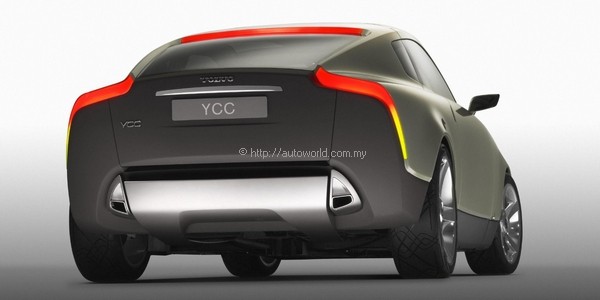 |





